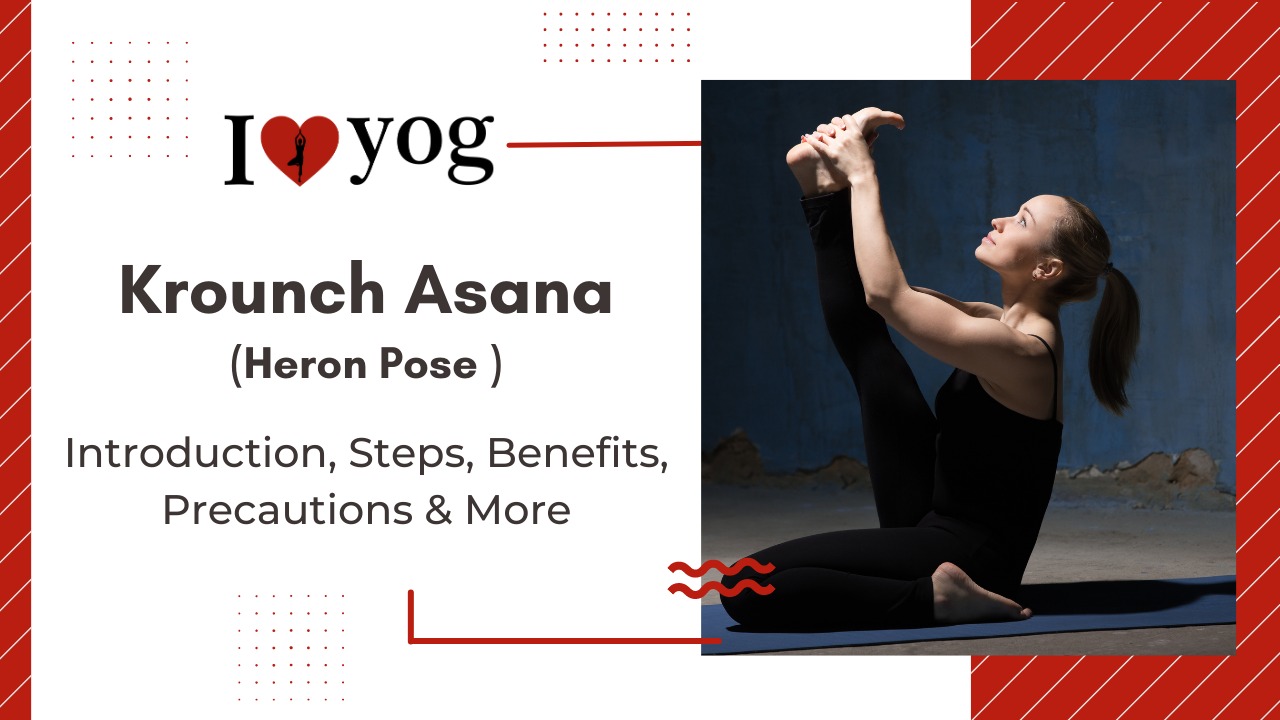What You Need to Know Before Attempting heron Asana?
Prepared Poses
- Adho Mukha Svanasana
- Baddha Konasana
- Dandasana
- Janu Sirsasana
- Paschimottanasana
- Siddhasana or Sukhasana
- Supta Padangusthasana
- Uttanasana
- Utthita Parsvottanasana
- Virasana
- Yogasana Level – Intermediate
- Yogasana Style – Seated Forward Fold
- Yogasana Repetitions – After 30 seconds.
- Yogasana Strengthens –
This increases blood flow to these areas and preserves the suppleness and strength of the muscles.
Yogasana Stretches –
Heron pose is a challenging asana that strains the back and thighs. The muscles of the hips and hamstrings, as well as the front of the ankles, are involved in the deep stretch.
Heron Asana’s effect on tri dosha
How to Perform the Heron Yoga Pose/Asana
Step 1
Sit in Dandasana (Staff Pose). Bring your left leg into Ardha Virasana. Then, bend your right knee and pose your right foot just in front of your right sitting bone on the floor. Place the inside of your right leg against your right arm (so that your shoulder presses against the inner knee). Cross your right hand in front of the right ankle and grab the right foot’s outside. The final step is to hold the inner of the right foot with the left hand.
Step 2
Lean back somewhat, yet maintain a long front torso. The firmness of the shoulder blades against the back will help preserve the chest’s elevation. Exhale and elevate the leg diagonally to the floor at a 45-degree angle, or with the foot as high or slightly higher than the head.
Step 3
Maintain this position for thirty seconds to one minute. Then exhale and lower the leg that was elevated. Unbend and straighten the left leg with care (see the description of Virasana [Hero Pose] for the safe way to remove the leg from its position). Repeat with the legs switched for the same duration.
What Are The Benefits Of Heron Pose/Asana?
- Remedy for fallen arches and chronic gas (flatulence)
- Extends the hamstrings
- Stimulates the heart and stomach organs
- Improves mental steadiness and concentration.
- Similar to the jaanurshishasana, this asana improves digestion by toning the spleen and liver.
- Due to the additional stretch in the pelvic region, the gonads receive a greater blood supply and so absorb more oxygen. This causes the gonads to absorb more nutrients from the blood.
- It aids with sciatica pain relief
- It also stimulates the pancreas and enhances insulin release.
- This asana is also excellent for alleviating anger, anxiety, and tension.
What Are The Contraindications And Precautions For Heorn Pose/Asana?
- Krounchasana should be avoided in the event of ankle, knee, or hip injury.
- It should be avoided during menstruation.
- In cases of lower back pain or injury, a modified version (described below) should be tried.
- While holding the extended leg with your hands, maintain a straight back.
- The movement of bending forward and bringing the leg inwards must not compromise the back’s structural integrity.
What’s the Science Behind Heron Pose/Asana?
Finding balance or stability while feeling an asymmetrical stretch in the legs is the objective of this position. In addition, the extended leg in krounchasana resembles a precipice and is hence connected to the name of Mount Krauncha.
Tips For Beginning Heron Posture/Asana?
With the down leg in Ardha Virasana, beginning trainees may have difficulties performing this position. Begin this pose by placing your down leg in the position for Janu Sirsasana. Regular practise of Virasana will prepare your thighs for Krounchasana.
Advanced Changes in Pose
By bringing the leg and body together, advanced students can enhance the stretch on the lifted leg’s back. From the stance indicated in step 2, bend the elbows sharply out to the sides, lean the chest forward slightly, and draw the leg in. Maintain a somewhat lengthy front torso; do not tilt forward from the abdomen.
Related Yoga Poses/Asanas –
Follow-up Poses
Typically, Krounchasana is performed as part of a lengthier sequence of seated forward bends. Typically, in an Iyengar or Ashtanga sequence, it is followed by positions such as or.
- Marichyasana I (Marichi’s Pose),
- Upavistha Konasana (Seated Wide Angle Pose),
- Paschimottanasana (Seated Forward Bend)
Reference:
https://www.yogajournal.com/poses/heron-pose/
https://www.fitsri.com/poses/krounchasana


